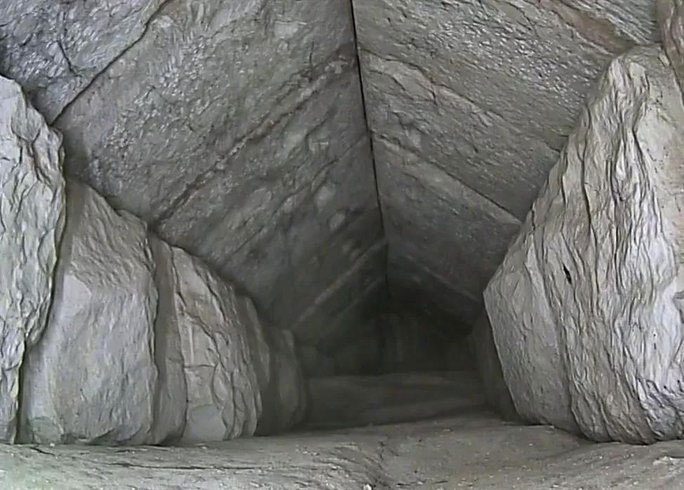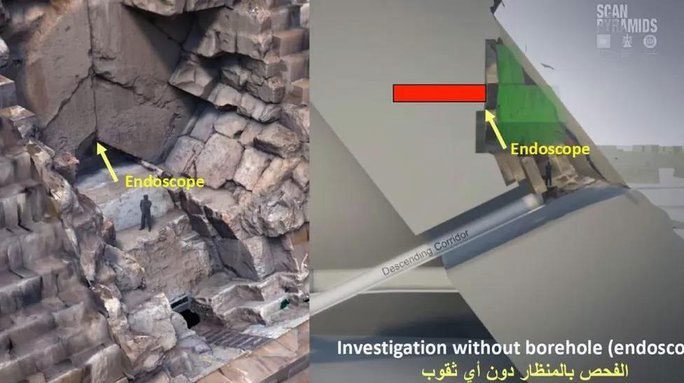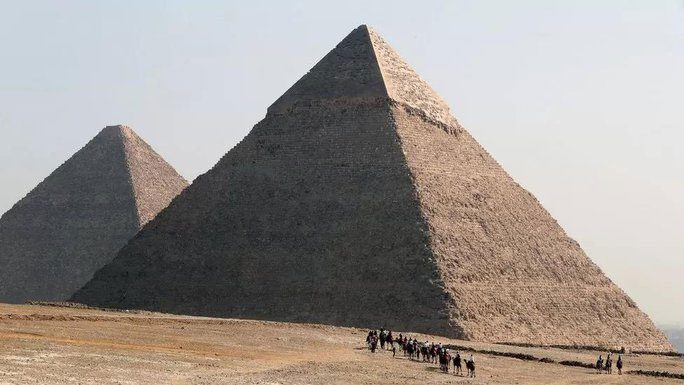Egyptian antiquities officials have confirmed the existence of an unknown corridor located just above the main entrance of the Great Pyramid – the largest of the famous Giza pyramid complex.
According to BBC, this discovery comes from the ScanPyramids Project, which employs a non-invasive imaging technique called muography to survey areas of this enigmatic pyramid that have not yet been explored.

Endoscopic image reveals the mysterious corridor – (Photo: EPA).
Muography utilizes muons, subatomic particles found in cosmic rays, which can penetrate the thick walls of the Great Pyramid and reveal the density of internal structures, thereby uncovering previously unknown spaces.
After detecting an anomaly at a height of about 7 meters above the main entrance, further tests were conducted using radar and ultrasound before a 6 mm endoscope was inserted through a small joint between the stones to access the mysterious corridor located behind the northern face of the pyramid.
Video from the endoscopic device shows a corridor that is 9 meters long and 2.1 meters wide, with a V-shaped structure made of stone. The walls of the corridor are roughly hewn.

Graphic image shows the location of the mysterious corridor inside the Great Pyramid – (Photo: EPA)
Mr. Mostafa Waziri, head of the Supreme Council of Antiquities of Egypt, stated: “We will continue scanning to see what we can do next to explore beneath the corridor, or its endpoint.”
This means that scientists are still unable to determine what this mysterious corridor was used for and where it leads.
To date, this ancient wonder of the world remains shrouded in mystery, with many parts yet to be explored, and there is even no consensus on how it was built.

The Great Pyramid is seen in the background as the largest in the pyramid complex at Giza – Egypt – (Photo: EPA)
This 146-meter high pyramid was built on the Giza plateau during the Fourth Dynasty of Pharaoh Khufu, also known as Cheops, who reigned from around 2609 BC to 2584 BC. However, even the tomb of this pharaoh – which would typically be located within the pyramid he constructed – has yet to be found.
Egyptian archaeologist Zahi Hawass stated that this corridor is a significant discovery, with hopes that it may help reveal whether Pharaoh Khufu’s burial chamber still exists within the pyramid.
He also speculated that there may be “something important” in the space beneath the corridor, expressing hope that subsequent survey steps will yield results in the coming months.
Previously, in 2017, scientists discovered another void using these cosmic muons. It is an estimated 30-meter long space with a height of several meters, located just above the Grand Gallery. The purpose of this large room remains a subject of debate.





















































